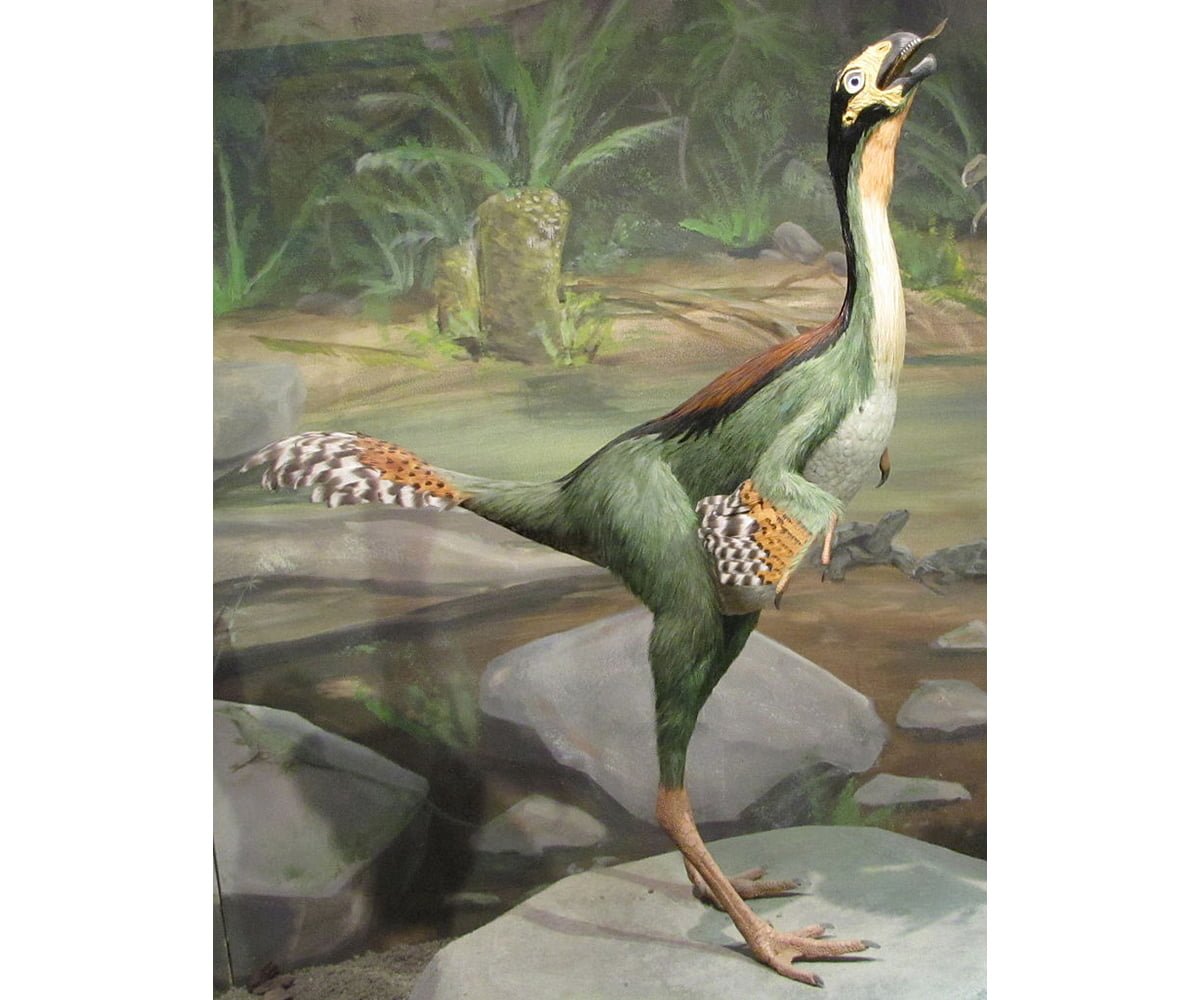Researchers conducted research where they tested a running dinosaur robot to see how two-legged dinosaurs started using their wings and evolved into flying creatures. They focused on how they started flapping their wings as part of the passive effect of running on the ground.
The new research, conducted by Jing-Shan Zhao at Tsinghua University, Beijing and his colleagues was published in PLOS Computational Biology. The research focuses on how flying evolved in dinosaurs, a topic which became a point of debate ever since 1861 when the Archaeopteryx was unearthed.
Researchers believe that the gliding type of flying in dinosaurs was developed much earlier in evolutionary history, but there is more and more evidence that active flapping of the wings evolved without the gliding phase.
Zhao and his colleagues wanted to confirm this by studying the Caudipteryx, one of the most primitive non-flying dinosaurs which was equipped with feathered “proto-wings.” They decided to develop a running dinosaur robot which would mimic the looks of the primitive dinosaur, and because of its lightweight structure of 5 kilograms, they were able to deliver accurate results of the study. It ran at a speed of up to 5 meters per second.
To mimic the movement of the ancient dinosaur, researchers relied on a mathematical method called modal effective mass theory, which helped them analyze the mechanical effects of running, which was then shown on different parts of Caudipteryx’s body. Researchers believe that speeds between 2.5 and 5.8 meters per second caused vibrations which would result in causing the wings to flap.
When researchers tested these calculations in real-time, with the running dinosaur robots, they confirmed that running between those two speeds resulted in a flapping motion in the wings.
Researchers also conducted tests on a young ostrich that was equipped with artificial wings and found that running caused the wings to go into motion. If the wings were longer or larger, the lift force while running would be even greater.
“Our work shows that the motion of flapping feathered wings was developed passively and naturally as the dinosaur ran on the ground,” Zhao said in a statement. “Although this flapping motion could not lift the dinosaur into the air at that time, the motion of flapping wings may have developed earlier than gliding.”
In the future, Zhao plans to continue his research and analyze the lift and thrust of Caudipteryx’s feathered wings. The test would be performed while the wings are in the passive flapping process.





